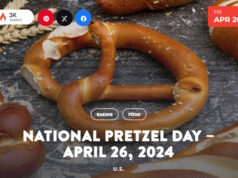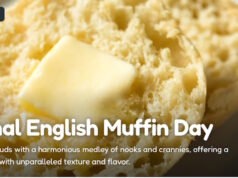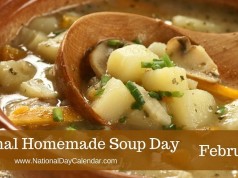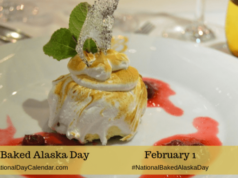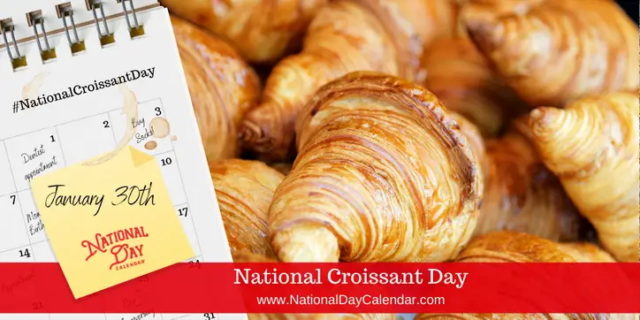
In the United States, National Croissant Day recognizes a flaky pastry enjoyed at every meal. Croissants are a buttery, crescent-shaped rolls that are crispy on the outside and soft on the inside.
- Legend surrounds this pastry, as is often the case with a popular, worldly treat. What is known, is that crescent-shaped breads have been found around the world for ages. One of these was the Kipferl which originated in Austria as far back as the 13th century. This nonlaminated bread is more like a roll.
- Credit for the croissant we know today is given to an Austrian military officer, August Zang. In 1939 he opened a Viennese bakery in Paris introducing France to Viennese baking techniques.
- Each croissant rolls are made of 50 or more thin layers of pastry & butter.
- According to legend, it was Marie Antoinette (Austrian Princess who married Louis XVI), introduced the croissant to France.
- The first recorded origin story about the croissant comes from the Battle of Vienna, either in 1683 or during the earlier siege in 1529, to celebrate the defeat of the Ottoman attack on the city, with the shape referring to the crescents on the Ottoman flags.
- The French newspaper Le Figaro named the croissant from bakery Pierre Hermé the best in Paris in 2013. It also won in 2006.
- Since Starbucks bought French baker Pascal Rigo’s San Francisco-based La Boulange, the chocolate croissant has become the coffee chain’s bestselling pastry.
- In 2013, chef Dominque Ansel came up with the cronut — a deep-fried croissant/doughnut combination that became all the rage at his New York bakery.
- The Croissant became the French national product in 1920.
- The Croissant started as a luxury product, but by the end of the nineteenth century, it was middle-class (the rich preferred a good brioche).
- Before the modern croissant, puff pastry was used as a garnish or shell, not to eat on its own.
- The chocolate croissant is actually called pain au chocolat, as it is not in the shape of a crescent.
- By 1869, the croissant was well established enough to be mentioned as a breakfast staple, and in 1872, Charles Dickens wrote (in his periodical All the Year Round) of “the workman’s pain de ménage and the soldier’s pain de munition, to the dainty croissant on the boudoir table.”
- The baked-goods corporation Sara Lee introduced a frozen croissant to America in 1981, which soon outpaced its famous pound cakes in sales. Burger King, Arby’s, and other fast-food chains followed with croissant breakfast sandwiches and savory stuffed croissants. As a 1984 New York Times article declared, “The Americanization of the croissant” had begun.
- It’s estimated that around 85 percent of croissants sold in French bakeries are actually industrially manufactured.
- In February 2016 the UK supermarket giant made a startling announcement: from now on, all its croissants will be curve-less. That’s despite the fact that its name literally means ‘crescent’.
Sources:



